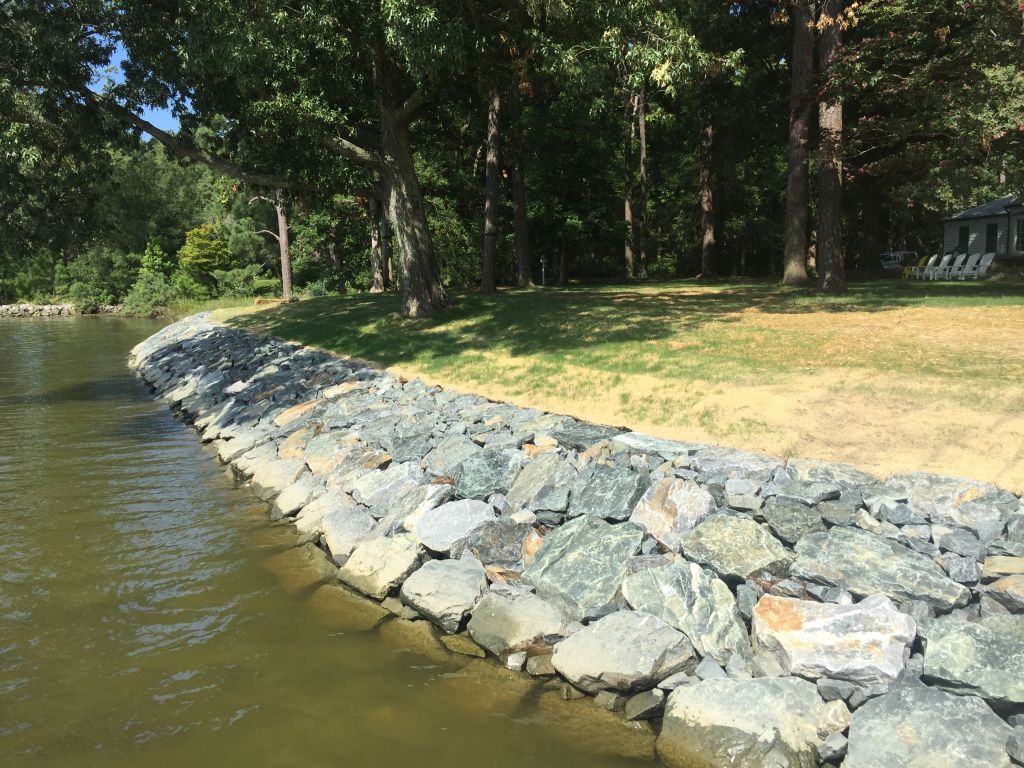
By Brandon Weems
The writer is president of the Maryland Marine Contractors Association in Easton.
Almost exactly four years ago, virtually every segment of American life was placed on indefinite hold as our nation and the world fell into a public health crisis. As we navigated those uncertain times, our government leaders repeated the following phrases:
Trust the science. Listen to the experts.
Indeed, following that advice is surely a sensible way to approach any situation, certainly one for which data is still being collected and analyzed. However, you don’t always get the best results if you only subscribe to one statement and not the other.
The Maryland General Assembly is facing one of those very situations as it considers the fate of Senate Bill 546 and its House version, House Bill 655. Currently, any tidal waterfront landowner looking to stabilize their shoreline, protecting their investment in their property, must either construct a living shoreline or qualify for a waiver from the government. To put it bluntly, that waiver process completely ignores the practicalities associated with private residential properties, most notably the cost.
In most cases, living shoreline construction is significantly more expensive, both upfront and over the long-term, than structural alternatives like bulkheads and revetments. For now at least, homeowners that have structures in need of being replaced may do so with the same measures. SB 546 and HB 655 will largely remove that possibility for applicants, and it will greatly alter licensed marine contractors’ ability to go do the very work the state is asking its residents to fund.
It must be said that the Maryland Marine Contractors Association is supportive of living shorelines. In most cases, they are the most environmentally sustainable way to counter the effects of shoreline erosion while also protecting local marine habitat. As a practical matter, living shoreline projects tend to be more financially lucrative for our members than alternatives, because they need to be maintained over time, sometimes substantially modified, re-planted, or even reconstructed.
These concerns are exacerbated when site conditions like a high or heavily vegetated bank significantly reduce the chances of success, or make the project cost prohibitive from the start. For projects that often reach six figures, it becomes a sizable gamble the government is asking homeowners to make.
These projects also often equate to a zero-sum game, where one vital natural resource — such as submerged aquatic vegetation — is disrupted simply for the prospect of new marshland. For many properties, the secondary aspects of the earthwork needed landward of the shoreline just to make it all work is effectively a second project entirely, sometimes even on par with the cost of the shoreline construction.
Furthermore, because of the more extensive project footprint associated with living shorelines, we are typically subject to “time of year” restrictions that cut our yearly working days on these projects in half.
The Maryland Marine Contractors Association is a tireless advocate for the protection and promotion of the marine construction industry in Maryland. It was our organization that championed the marine contractor licensure legislation back in 2010 with the goal of raising the professional bar within the industry and establishing a mutually beneficial working relationship with federal, state, and local regulators. Our members build more of these living shorelines in the state than anyone, and we are professionally trained to respond when homeowners need a solution for shoreline erosion.
This legislation would take that responsibility away from the professionals and give it to those who have the best of intentions, but not the training or experiential knowledge to make decisions of that magnitude. Experience has shown that impractical approach to shoreline restoration will motivate many homeowners to skip the permitting process altogether and turn to uncredentialed contractors for the sake of affordability. Results in those instances are painfully predictable.
The Maryland Marine Contractors Association fully supports the use of living shorelines to combat erosion in a way that contributes to cleaner and healthier waterways. Unlike the bill sponsors, our members recognize there are instances when they simply are not practical, and we have the professional experience to know the difference. For the sake of Maryland’s homeowners, small business owners and ecologically sensitive bodies of water, our legislative leaders should, once again, trust the science but also listen to the experts.




 Creative Commons Attribution
Creative Commons Attribution